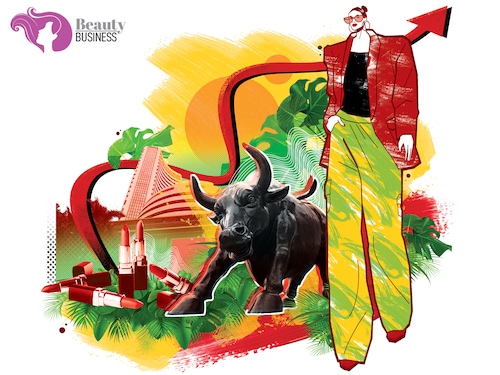Madan Sabnavis on India's lipstick effect
The economics of the beauty industry in India is being shaped by post-Covid consumer demand and corresponding supply, the chief economist of Bank of Baroda, and author, Corporate Quirks: The Darker Si


The Indian economy is slated to grow at around 7 percent for the next couple of years, including FY25. At the same time, there have been some pertinent concerns raised on urban demand not quite keeping up. The rural economy, however, is slated to do better due to the good monsoon and kharif crop. If one were to look at sectoral growth trends, the picture is mixed. Those related to infrastructure tended to do better than consumer-related products. High inflation, in particular food inflation, has been a dampener.
Now interestingly, playing in the background is the ‘lipstick theory’ which broadly says that when the conditions are challenging for households, they take recourse to consumption of beauty products and services that improves the ‘feel good’ factor. How is one to interpret this phenomenon in our context, where it is believed that the recovery is shaped by the letter ‘K’?
The ‘lipstick’ theory or impact has been witnessed in the country post Covid, notwithstanding the fact that headline inflation has been high. There are several economic forces that have been working in this direction. First, the return to normal post Covid has meant that individuals have gotten back to their physical place of work, which in turn has made physical grooming an integral part of office life. With most companies now insisting on workers coming back to their desks, even if for a specified number of days in a week, the desire to ‘look good’ has returned. It may be recollected that during the lockdown phase of the pandemic, where work-from-home was the norm, all business was driven by Zoom and Microsoft Teams meetings. The change now has meant a return to normal.
Second, the pent-up demand phenomenon has been witnessed everywhere in the economy. It started with people going out and buying physical goods and then spread more significantly to services in FY24 and FY25 (ongoing). This can be seen in the PMI (purchasing managers’ index) numbers too. An enhanced demand for services has included travel and tourism, as well as hospitality. Intuitively it can be seen that once people start moving out to revel in these services, there is a tendency to also dress-up for the same, which has led to demand for beauty products. In fact, an interesting phenomenon post Covid has been a rapid rise in the supply of entertainment, which can range from movie releases to international concerts like those of Coldplay or Dua Lipa, besides the conventional classical music and Indian language concerts. This has enhanced the ‘outings’ of almost the millennials and Gen-Z groups. This has also increased demand for such products as appearance is more important than the subject when attending these concerts.
Fourth, the income distribution pattern of the country has changed. While there is high inequality, those at the bottom and mid segments have witnessed improvement in their incomes and several jobs have been created at the lower level in industries, like delivery services. Therefore, the consumption class has increased. Here, the famous theory of ‘demonstration effect’ enunciated by Thorstein Veblen (formalised by economist James Dusenberry) has a role to play, where individuals would like to follow what the ‘other influence groups’ do. This has led to demand, especially for services in beauty parlours, which includes services like tattooing and grooming, and also includes male customers. A couple of decades back, such products and services were largely consumed by women.
Last, with demand for such products increasing, there has been a sharp increase in their supply. This can be seen by both the mushrooming of beauty parlours even in slum areas, besides the rural and semi-urban regions, as well as the rise of the informal sector producing these beauty products. This has made these products and services more affordable, as the prices tend to be lower than those of the organised sector.
Therefore, the lipstick effect or theory has worked quite decisively in the Indian context, with both sides of demand and supply working well, with each force-feeding into the other. This symbiotic relationship holds promise for the future too as the economy continues to grow and create more jobs where consumption of such products becomes a habit.
The writer is chief economist, Bank of Baroda, and author of Corporate Quirks: The darker side of the sun
First Published: Jan 02, 2025, 12:29
Subscribe Now